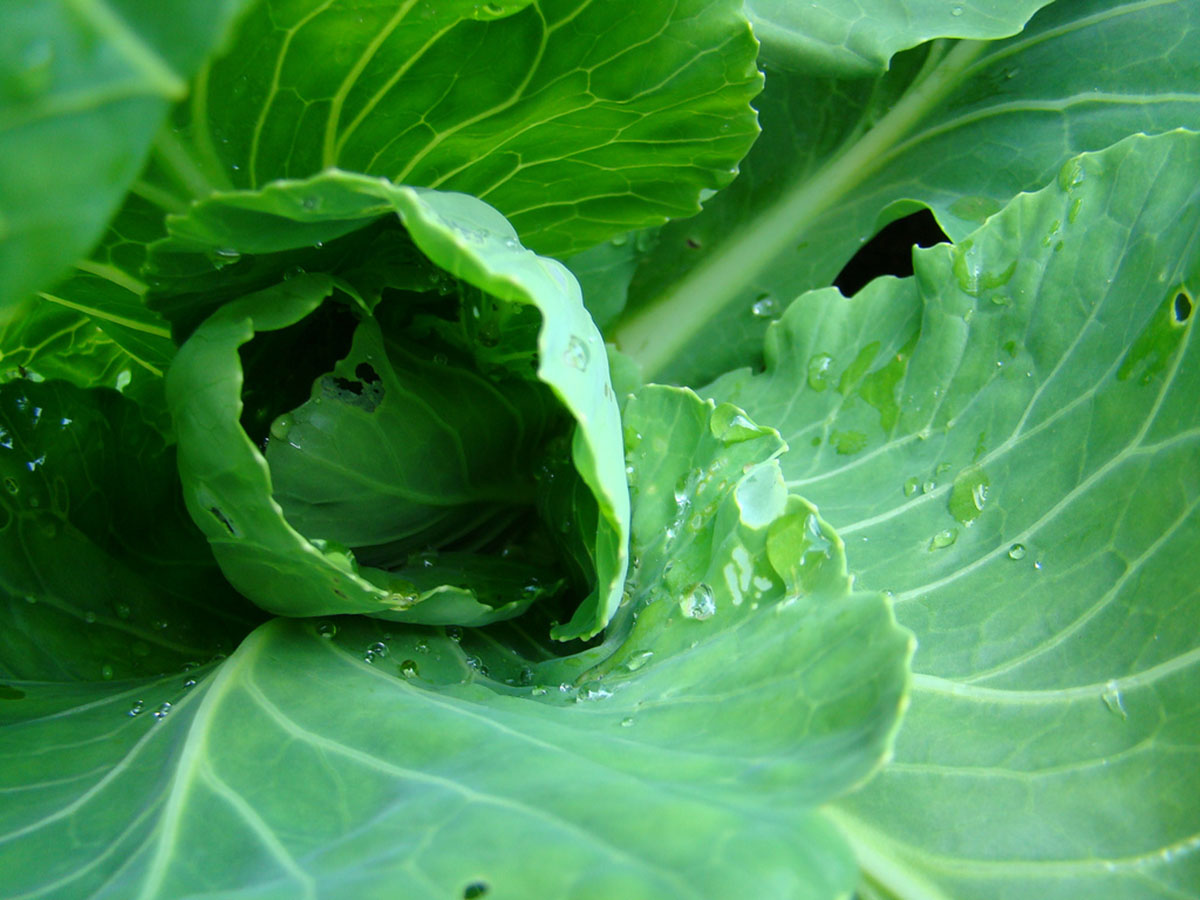Table of Contents
The most famous nutritional application of vegetables in the cabbage family is for cancer prevention. It's important to make a few things clear up front. Cabbage doesn't cure cancer. Eating a lot of cabbage isn't an absolute guarantee you won't get cancer. And eating more and more cabbage isn't helpful. The maximum benefits of eating cabbage accrue from eating vegetables in this family just three or four times a week.

Cabbages fight cancer by providing a class of sulfur-containing compounds called isothiocyanates. These cancer-fighting chemicals "break out" of tiny droplets in the vegetables as they are digested, but they are better released if the vegetables are well chewed before they are swallowed. The chemicals go into the bloodstream in the small intestine. From the small intestine they are transported by the bloodstream to the liver though the hepatic portal vein. The liver sends them into general circulation. Eventually they circulate back to the kidneys where some of the compounds are sent to the bladder, and some of the compounds are sent to the colon. Spent isothiocyanates are eliminated in both feces and urine.
The primary action of the isothiocyanates takes place where the compounds have the longest contact with a membrane, in the linings of the bladder and then in the colon. For that reason, cabbage family vegetables do the most to prevent cancers of the bladder and colon.
However, isothiocyanates don't perform their cancer-fighting tasks alone. They have to use a compound called N-acetyl cysteine to make other cancer-protective chemicals. The compounds resulting from the combination of isothiocyanates and N-acetyl cysteine release a potent antioxidant called glutathione (or enable cells to make more of their own glutathione). The glutathione interacts with the DNA in cancer cells in ways that don't kill the cell (which would trigger an inflammatory reaction that can damage neighboring healthy cells) but prevent it from dividing. Essentially, these chemicals put a cancer cell "on hold" so it eventually dies of cellular senescence, a kind of cancer cell old age. However, glutathione also protects healthy cells from changes to their DNA that could transform them to cancer cells.
All cabbage family vegetables are not equally useful in preventing cancer.
- About 10 percent of people are born with genes coding the liver enzymes essential for the transformation of isothiocyanates in cabbage family vegetables into their cancer-fighting form.
- If your diet is short on the amino acid cysteine, cabbage family vegetables won't have a cancer-fighting effect. However, meat, eggs, dairy, red peppers, broccoli, brussels sprouts, and wheat germ provide it.
- Mustard (the condiment) is an even more concentrated source of isothiocyanates than green vegetables.
- Not everyone reacts to cabbage family vegetables the same way. How much good you do by eating these vegetables depends on genetics.
Just about everyone benefits from cabbage family vegetables in terms of colon cancer prevention. Eating three to four servings of these vegetables every week, week after week, reduces the risk of colon cancer approximately 15 to 25 percent.
Some women get special protection against breast cancer by eating three to four servings of cabbage family vegetables every week. In fact, some women need cruciferous vegetables. An inherited gene variation scientists identify as the GSTP1 Val/Val genotype results in a higher risk of breast cancer in these women if they don't eat cruciferous vegetables on regular basis, but 50 percent lower risk if they do. Women who don't have this gene may only have a 10% reduction in breast cancer risk form eating cabbage. Chinese (Napa) cabbage lowers cancer risk for women more than white or red cabbage, because it contains more isothiocyanates.
READ Tips For Breast Cancer Prevention
Men also get cancer protection by eating cabbage family vegetables, but through a different chemical. Prostate cancer is lowered by exposure to a chemical known as sulforaphane. This chemical is concentrated in broccoli and especially broccoli sprouts, which contain far more sulforaphane than other cabbage family vegetables. Men seeking dietary protection against prostate cancer should eat broccoli, not cabbage.
- Hahn C, Müller A, Kuhnert N, Albach D. Diversity of Kale (Brassica oleracea var. sabellica): Glucosinolate Content and Phylogenetic Relationships. J Agric Food Chem. 2016 Apr 27. 64(16):3215-25. doi: 10.1021/acs.jafc.6b01000. Epub 2016 Apr 15. PMID: 27028789.
- Migliozzi M, Thavarajah D, Thavarajah P, Smith P. Lentil and Kale: Complementary Nutrient-Rich Whole Food Sources to Combat Micronutrient and Calorie Malnutrition.Nutrients. 2015 Nov 11.7(11):9285-98. doi: 10.3390/nu7115471. Review. PMID: 26569296.
- Photo courtesy of jetheriot: www.flickr.com/photos/jetheriot/6655652091/
- Photo courtesy of jetheriot: www.flickr.com/photos/jetheriot/6655652091/
- Photo courtesy of karinjonsson: www.flickr.com/photos/karinjonsson/3716547241/


Your thoughts on this